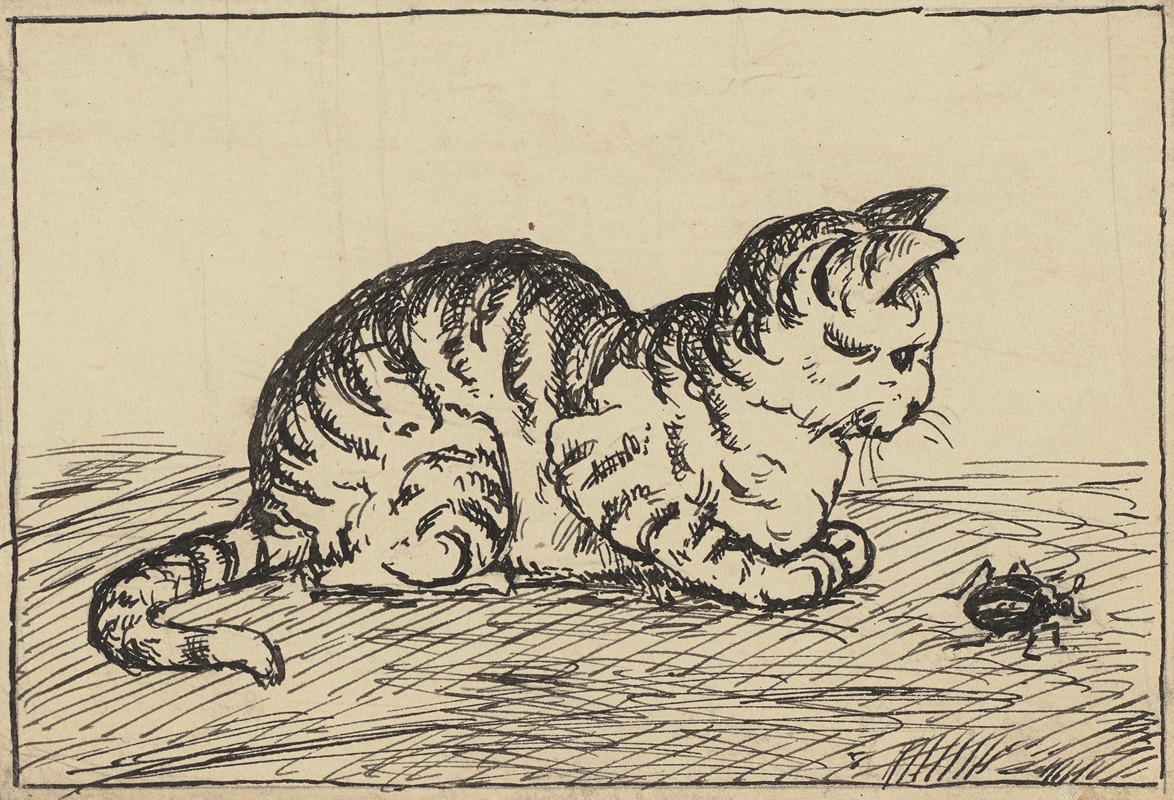
Katze
A hand-painted replica of Hans Thoma’s masterpiece Katze, meticulously crafted by professional artists to capture the true essence of the original. Each piece is created with museum-quality canvas and rare mineral pigments, carefully painted by experienced artists with delicate brushstrokes and rich, layered colors to perfectly recreate the texture of the original artwork. Unlike machine-printed reproductions, this hand-painted version brings the painting to life, infused with the artist’s emotions and skill in every stroke. Whether for personal collection or home decoration, it instantly elevates the artistic atmosphere of any space.
Hans Thoma was a German painter born on October 2, 1839, in Bernau in the Black Forest. He is known for his landscapes, portraits, and genre paintings, often reflecting a deep connection with nature and a romanticized view of rural life. Thoma's work is characterized by its attention to detail and a style that bridges realism and symbolism.
One of Thoma's notable works is "Katze" (translated as "Cat"), which exemplifies his ability to capture the essence of his subjects with precision and a touch of whimsy. Although specific details about the painting "Katze" are scarce, it is consistent with Thoma's broader oeuvre, which often includes animals as central or complementary elements in his compositions. Thoma had a unique ability to infuse his animal subjects with personality and life, making them relatable and engaging to the viewer.
Thoma's artistic journey began with his studies at the Karlsruhe Academy of Fine Arts, where he was influenced by the teachings of Johann Wilhelm Schirmer and Ludwig des Coudres. His early work was heavily influenced by the Romantic movement, but he gradually developed his own style that incorporated elements of realism and symbolism. Thoma's work often reflects his deep appreciation for the natural world, a theme that is evident in his landscapes and animal paintings.
Throughout his career, Thoma was associated with the Munich Secession, a group of artists who sought to break away from the traditional academic art of the time. This association allowed him to explore new artistic ideas and techniques, which is evident in the diversity of his work. Thoma's paintings often feature a harmonious blend of color and form, creating a sense of tranquility and balance.
"Katze" fits within this context as a representation of Thoma's skill in portraying animals with a sense of realism and charm. While specific details about the painting's creation and its current location are not widely documented, it remains a testament to Thoma's ability to capture the spirit of his subjects. His work continues to be appreciated for its technical skill and the warmth and humanity it conveys.
Hans Thoma's legacy is preserved in various collections, including the Kunsthalle Karlsruhe, which houses a significant number of his works. His influence extends beyond his paintings, as he also contributed to the arts through his role as a teacher and director at the Städelsches Kunstinstitut in Frankfurt. Thoma's dedication to his craft and his ability to convey the beauty of the natural world have earned him a lasting place in the history of German art.
In summary, while specific information about the painting "Katze" is limited, it is representative of Hans Thoma's broader body of work, which is celebrated for its attention to detail, harmonious composition, and the ability to evoke a sense of connection with the natural world. Thoma's paintings continue to be admired for their artistic merit and their reflection of the artist's deep appreciation for the beauty of everyday life.





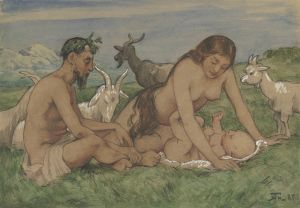
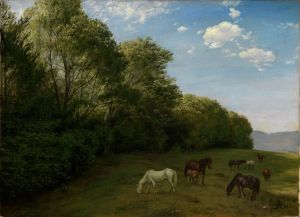
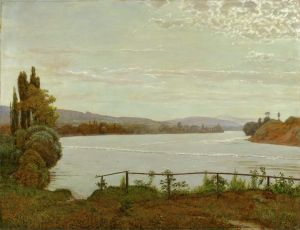
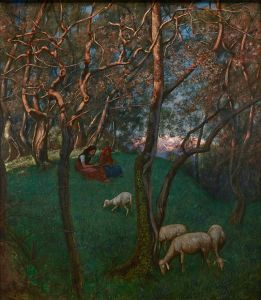
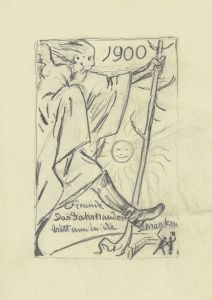
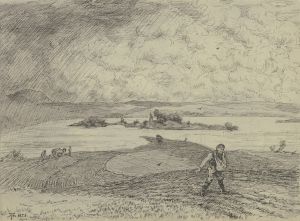
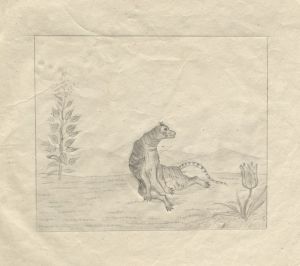
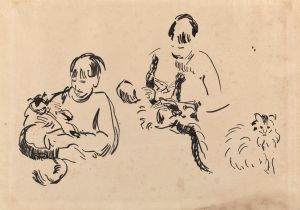
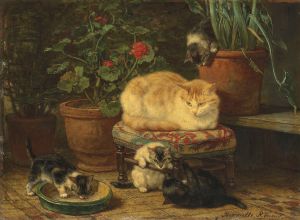
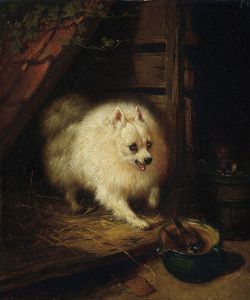
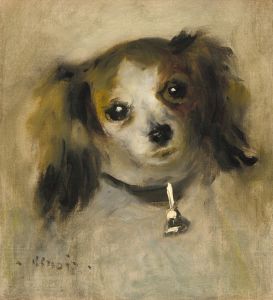
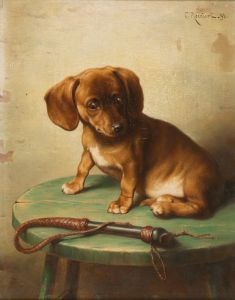

![The Claws of a Cat and the Dress of a Devotee-Similar to Vice Is Often Clothed in Virtue’s Habit [General Folly]](/imgs/264662/s/francisco-de-goya-the-claws-of-a-cat-and-the-dress-of-a-devoteesimilar-to-vice-is-often-clothed-in-virtues-habit-general-folly-3d0e1eb5.jpg)